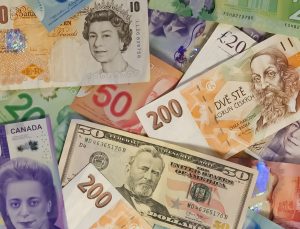Forex, or foreign exchange market, is the largest financial market in the world. It is a decentralized market where currencies are traded 24 hours a day, five days a week. The movements in the forex market are determined by a number of factors, including economic data, geopolitical events, and central bank policies. However, one question that often arises among traders is why forex moves without buyers and sellers.
To understand this phenomenon, it is important to first understand how the forex market works. In the forex market, currencies are traded in pairs, such as the US dollar and the euro (USD/EUR). The exchange rate between the two currencies fluctuates constantly, reflecting the supply and demand for each currency. When there are more buyers than sellers of a particular currency, the exchange rate will rise, and when there are more sellers than buyers, the exchange rate will fall.
However, there are times when the forex market moves without any significant changes in the supply and demand for a particular currency pair. This can happen for a number of reasons, including:
1. Central bank intervention: Central banks, such as the Federal Reserve in the US or the European Central Bank in the eurozone, have the ability to influence currency exchange rates through their monetary policies. For example, if a central bank announces that it will raise interest rates, this can cause the value of the currency to rise, even if there are no buyers in the market.
2. Economic data releases: Economic data, such as GDP growth, inflation, and unemployment, can have a significant impact on currency exchange rates. When a country releases positive economic data, it can lead to an increase in demand for its currency, even if there are no buyers in the market.
3. Geopolitical events: Geopolitical events, such as elections, wars, and natural disasters, can also impact currency exchange rates. For example, if there is political instability in a country, this can lead to a decrease in demand for its currency, even if there are no sellers in the market.
4. Market sentiment: Market sentiment, or the overall mood of traders in the forex market, can also impact currency exchange rates. If traders are optimistic about the future of a particular currency, this can lead to an increase in demand for it, even if there are no buyers in the market.
In addition to these factors, there are also a number of technical indicators that traders use to predict currency exchange rates. These include moving averages, support and resistance levels, and trend lines. While these indicators are based on historical data and do not directly reflect the supply and demand for a particular currency pair, they can still have a significant impact on the movements in the forex market.
In conclusion, while the movements in the forex market are primarily driven by the supply and demand for each currency pair, there are a number of other factors that can also impact currency exchange rates. These include central bank intervention, economic data releases, geopolitical events, market sentiment, and technical indicators. As a result, it is important for traders to stay informed about these factors and to use a variety of tools and strategies to predict currency exchange rates.





